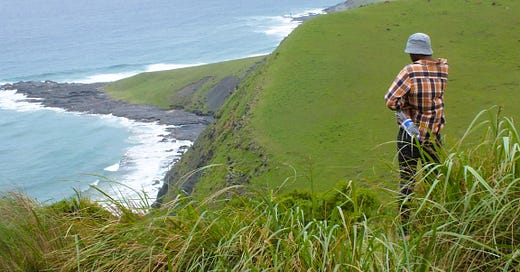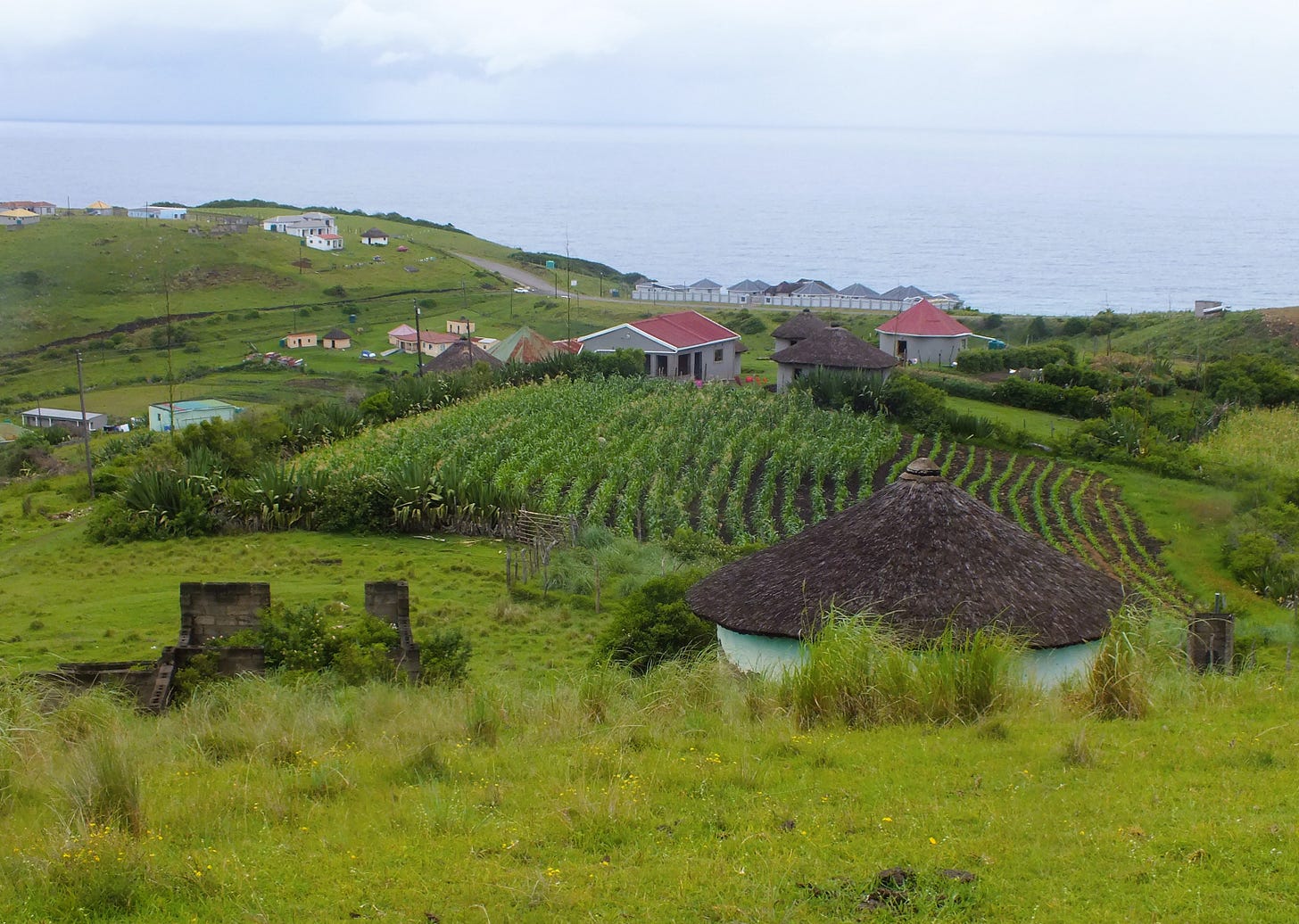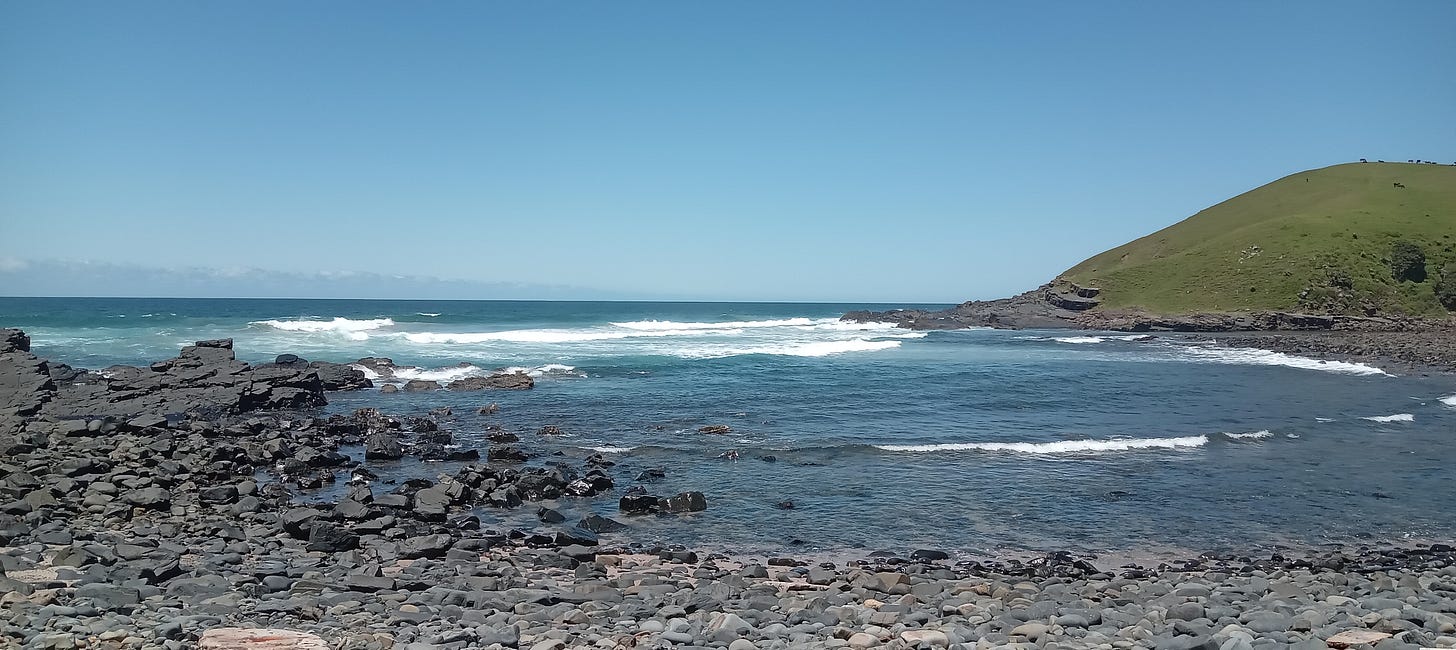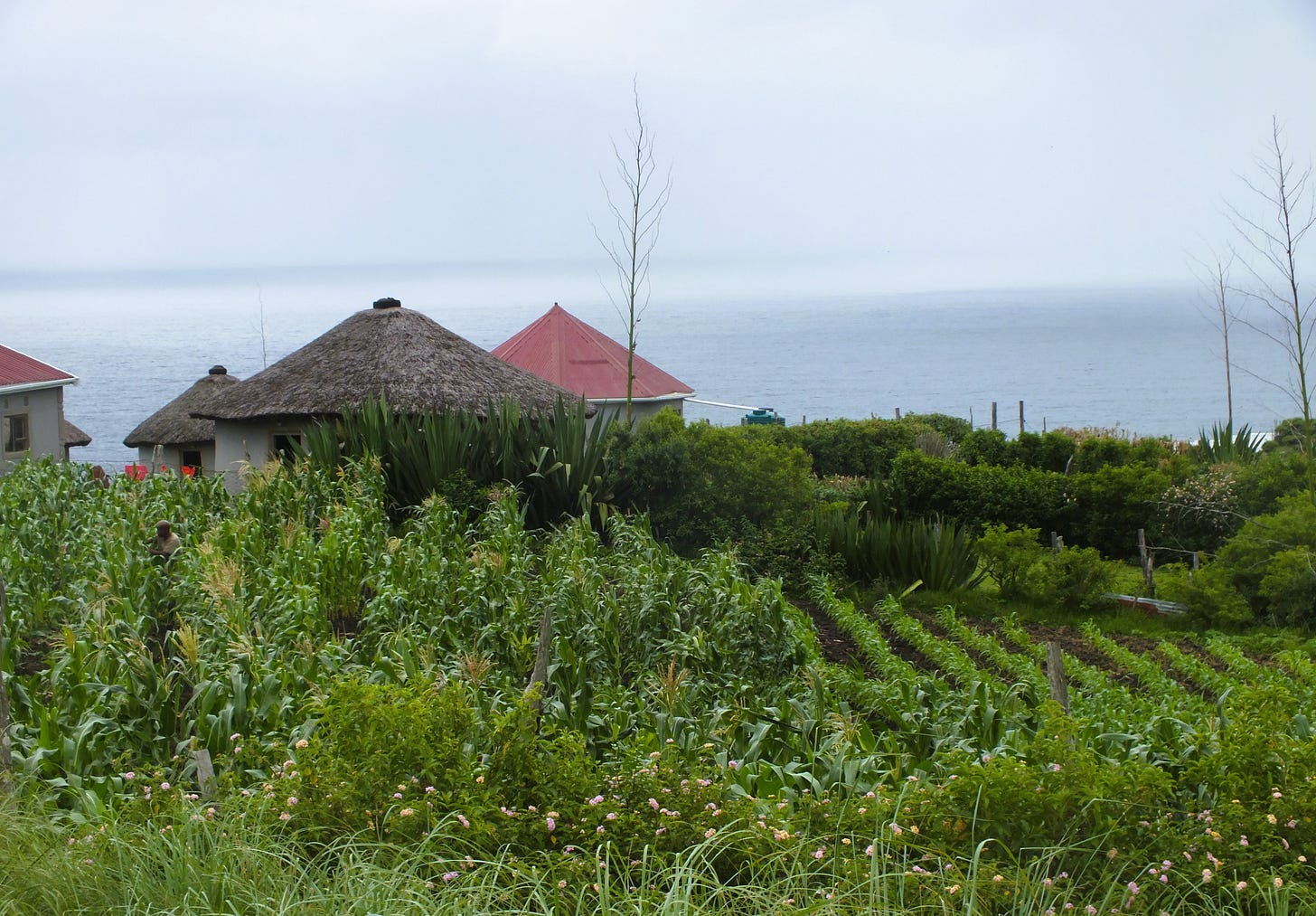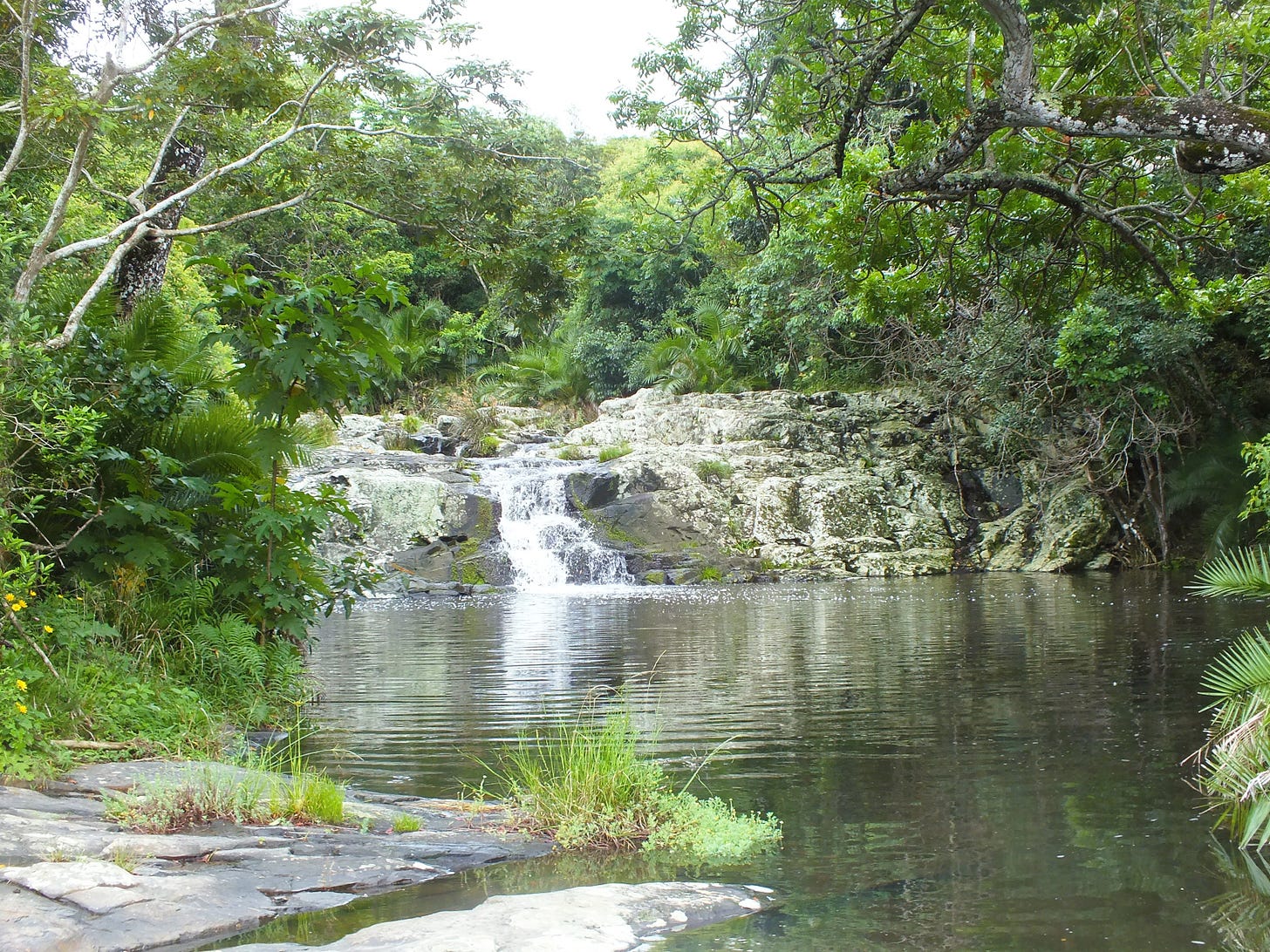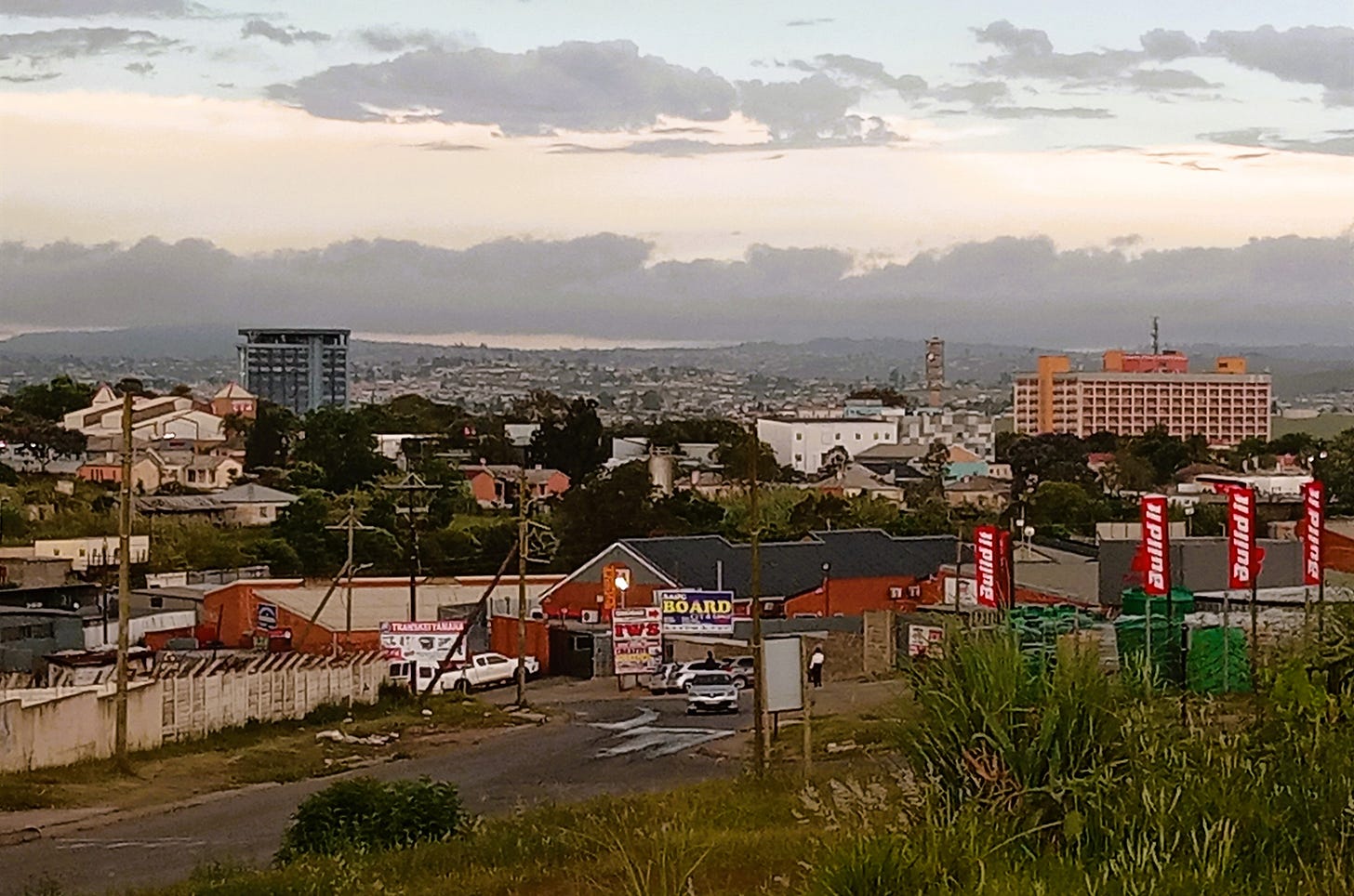This post is a continuation of the previous one: ‘Leeto la kwa Letwatleng.’
A view to the east
At the end of a long Sunday of road travel (including an extended wait at a transfer point) I found myself in the small coastal community of Coffee Bay, tucked into a cove a few hundred kilometers south of Durban. The difference, the leaden-gray skies notwithstanding, was palpable as I savored my dinner, ‘catch-of-the-day,’ and a cider on the veranda of a little cafe overlooking a creek just a short distance from where it empties into ocean. Across the stream, a striking straw-colored dune rose impressively — a few scraggly trees clinging to it as if trying to pin it in place. This slope appeared to be a break in the berm of the beach — where it had been carved by the incessant energy of the stream. Amid this tranquility, my mind was at ease with the knowledge that I had reached my ultimate destination, the heart of the Wild Coast, with little in store for the next five days but to explore and relax.
The following day I set out to investigate what exactly makes this stretch of coast so ‘wild.’ What’s so remarkable about it? I had heard from others about the mysterious caves and the impressive arches and cliffs that lined the shore, and the tidy villages that clung to the hills above. So that morning, in a whimsical attempt to locate the notorious Mapuzi caves, I set out along the beach and up a long hill which brought me to the non-descript enclave of Kujonga. Things got more interesting as I continued north along the road, at one point arriving just a few paces from the edge of a precipice that plunged nearly 100-meters down to the sea. With no barriers, hand rails or admonishing signs in place, I thought back appreciatively to that tidbit of travellers’ wisdom that I had received recently: something about venturing out at night.
As I stood there taking in the awesome view and admiring the temerity of a cow teetering precariously close to the cliff’s edge, I was interrupted by the squeals of a pig that was being dragged by three men, apparently to its demise near an already burning cooking fire. Moments later the noise and the struggle were over as the men stood up and relaxed over the carcass — gathering energy for the formidable task of rendering it into usable cuts that lay ahead. As I thought more about it, it seemed to me a fair bargain: this animal — which would feed several families for days with not an edible piece being wasted — had experienced a life of fresh sea breezes, mild days and wild grubs and insects to supplement its daily rations, in addition to unobstructed views out over the ocean (do hogs even appreciate such things?) — certainly not the worst life imaginable for a domesticated Sus scrofa.
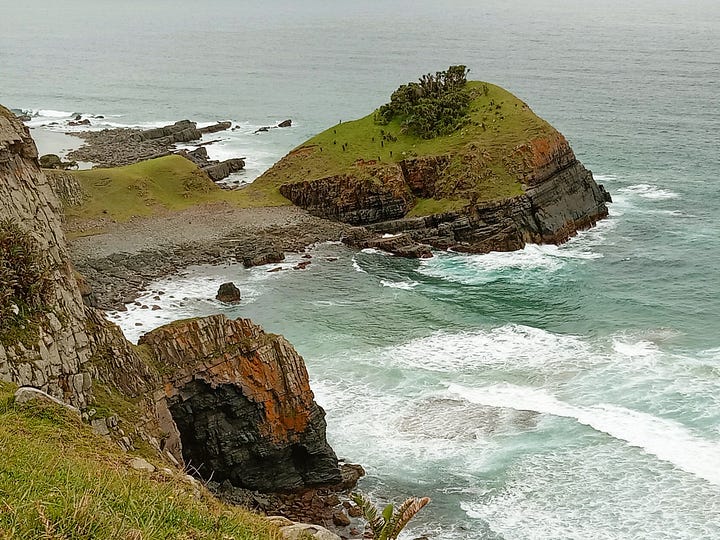

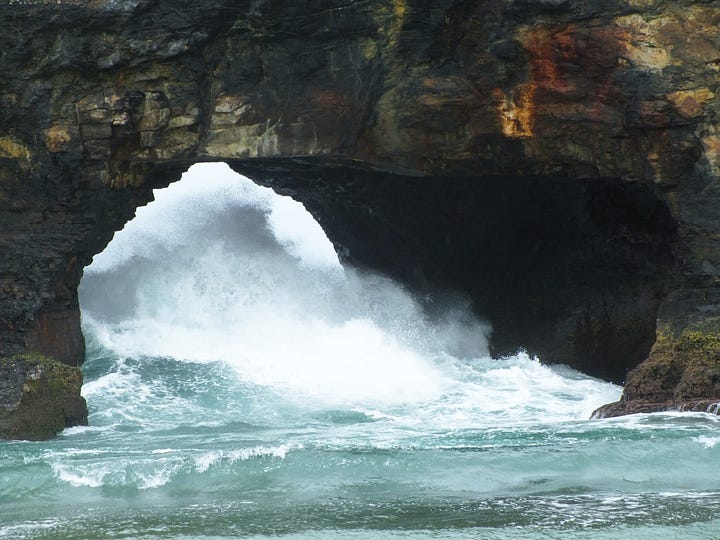

I never did find the caves (chiseled by relentless wave action into differentially resistant layers of nearly 300 million year-old sandstone and shale), but the edge of the Mapuzi River seemed a fitting place to call off this half-hearted search and enjoy a snack atop a boulder overlooking the meandering waters flanked by dense vegetation teeming with nesting birds. Local lore has it that, in his darkest days on the lam, Nelson Mandela and some of his comrades took refuge in the Mapuzi caves; that with their superior knowledge of the terrain and tidal cycles, they would find safety while the advancing tide protected them from the authorities in pursuit. It is also alleged that these sea-side caverns served as something of a field arsenal to hide weapons (this being around time when the African National Conference had reversed its 50-year old policy prohibiting armed tactics). Looking at the terrain and trying to envision the logistics I’m not sure which, if either, of these accounts I find to be the more plausible.
After wandering the several kilometers back down through the drizzly hills to Coffee Bay, I turned onto its main road and was immediately met by a growing crowd of people — exiting vans, walking the road, mingling in groups, and starting up grills. Naively, I puzzled over their appearance here on this gloomy Monday afternoon; but my thoughts were rectified upon hearing that this was Reconciliation Day — a national holiday in South Africa — and as the versatile manager of my guest house informed me: “South Africans take their holidays very seriously.”
Having recharged and freshened up a bit, I seized upon a lull in the drizzle to make my way up the slippery track to a lofty dinner spot, to which I was reluctantly admitted in spite of not having an advance-booking (there always seems to be room for one more). I had the entire front deck to myself: apparently it was too gloomy and cold outside (22 degrees C.) for the other patrons. While I sat there nursing my glass of ‘dry white’ and taking in the view of the shore and the Indian Ocean beyond, I was struck by the stark contrast in scenes playing out my either side: the wild celebration in process far below to my left and the rather moribund mood just inside the glass door on my right. It seemed such a paradox: the exuberance coming from hoards of soggy day-trippers occupying the muddy flats below, verses the subdued aura of the well-heeled inside their cozy confines — smart-phones in hand alongside servings of prawns, calamari, wine and background music — on their extended ocean-side holidays.
And I involuntarily took on their melancholy, if just for a spell (perhaps it was contagious). Gazing out at the seemingly interminable Indian Ocean and thinking of the lands that touches well beyond my sight — Madagascar, Tazmania, Australia, Indonesia, Malaysia, Sri Lanka, India — all of which here-to-fore have been just an idea, a dream, a Wilkipedia entry to me — I began to feel a little wistful. With yet another year racing to a close — looking out on this, one of the world’s storied seas for the first time, induced a reflection back on a life lived and its many experiences, but even more: a rumination on those not yet realized. With the rhythmic pounding of its surf (hardly audible above the din from the flats), the vast ocean seemed to be casting an invitation, or at least temptation, to all that lay to its east. With that I was visited by a line from the song ‘Moon River,’ “…there’s such a lot of world to see…,” which lodged itself intractably in my head. Sentimental perhaps, it’s nonetheless hard to refute the wisdom in those words penned some 60-years ago. In spite of all that has transpired since, it seems just as relevant now as it did then and, to some, that can be hard to ignore.
The Transkei
But the next few days I spent close by, exploring the rocky and sandy shorelines, wooded ravines and pastoral villages for which this region is known. To travellers and tourist industry operatives, this may be the ‘Wild Coast,’ but to the rest of South Africa, this southeastern stretch of the country is better known as the Transkei, heartland of the Xhosa people, the country’s second largest ethno-linguistic group (after the Zulu). The first thing one notices here is the preponderance of circular homes (rondavels) that dot the landscape and which are typically painted in two colors — with a darker shade below to hide dirt splattered by rain or rubbed off by animals. Lucky, my local guide, explained that these often vibrant colors are selected with an eye toward cost; however, formerly each clan claimed a unique color for its compound’s buildings. This made things easier for the men — who upon returning after months or years from the distant townships where they had gone for employment — to make their way home from their drop-off points; if you knew your compound’s color you only had to be in the vicinity to find your way back.
Another difference in those earlier times was the domestic arrangement within the family compounds or kraals (an animal pen within each compound, often used to refer to the home place). A few generations back each of the rondavels within the kraal might have been home to one woman (and her children), each a wife of the patron who would have had his own dwelling apart from the others. Indeed it was such an arrangement that the young Rolihlahla (Nelson) Mandela knew growing up a century before; he was the son of the youngest of his father’s (a local tribal chief) several wives. As I wandered this windswept landscape with its scattered settlements, it was fascinating to imagine this future leader and icon coming of age in such confines amid the grassy hills and lumbering herds of livestock.
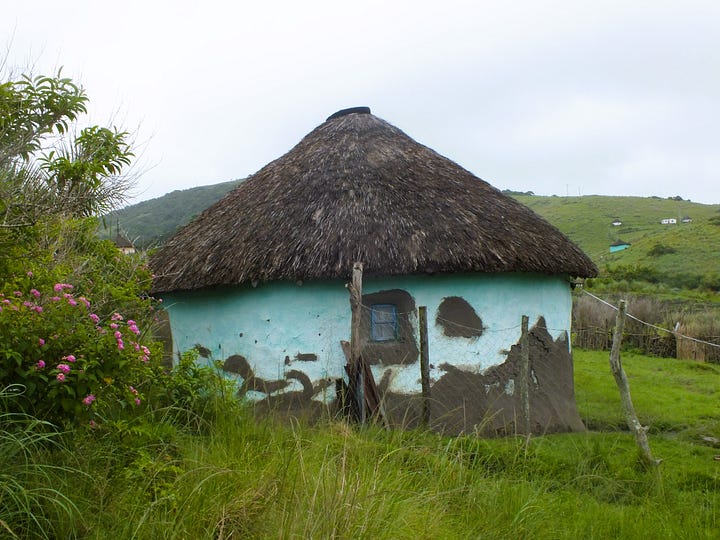
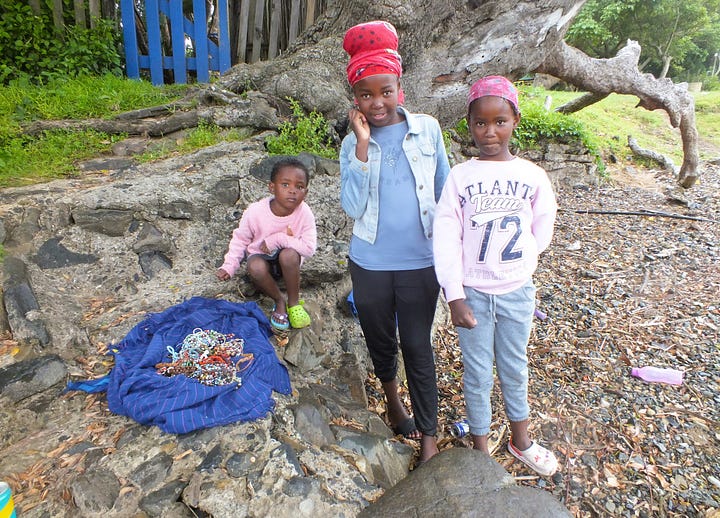
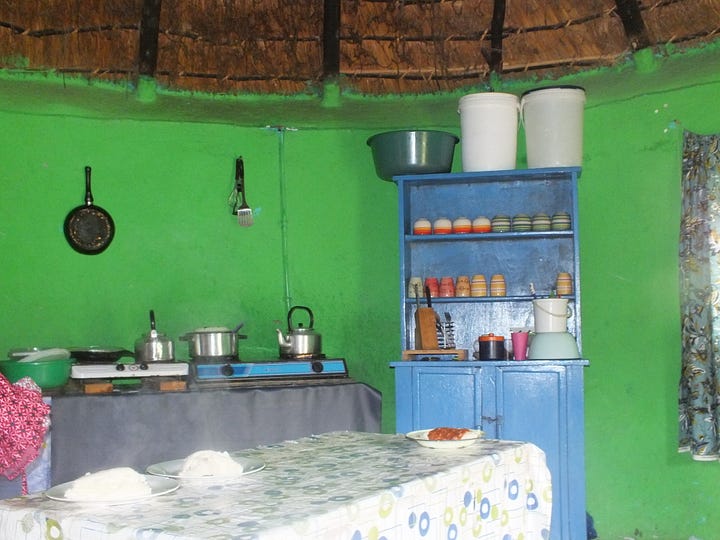
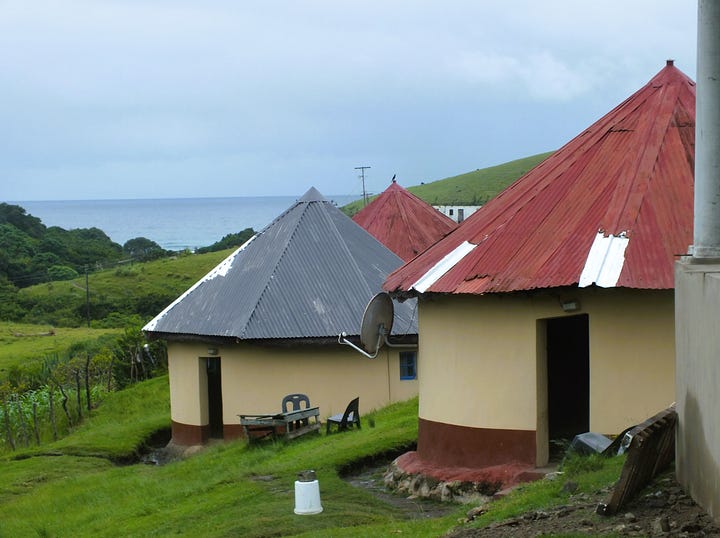
And such animals were milling about as we trudged up the hill to the edge of the settlement but, in unlike in other regions, here we find a wide variety of livestock. In addition to the ubiquitous cows and goats (cattle are the main form of material wealth while goats hold the ritualistic importance) there is a formidable population of sheep as well as good numbers of horses and pigs. The sheep here are raised for their bulky fleeces, and they appear to be right at home on these cool blustery hills abutting the coast. Apart from the animals and scattered fields of maize and sorghum, the sea is the major source of sustenance and support in this community — which is some 100-km removed from any significant commerce or industry. As we navigated the steep seaside pathways, we passed men toting long fishing rods and buckets and woman carrying large covered bowls which, upon closer look, revealed the mussels within. While my guide readily helped himself — immediately shucking them and consuming their raw insides — I, for my part, held back the temptation.

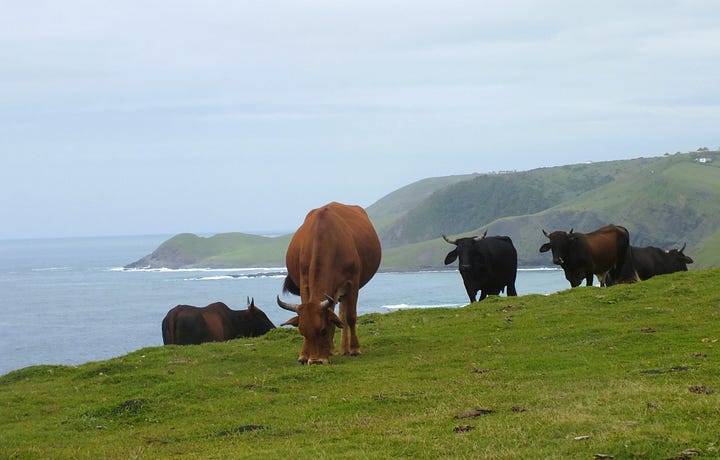
Sitting on a rocky ledge in front of a mesmerizing cascade surrounded by lush, flowering vegetation, we had reached the end point of our trek; but in spite of the mugginess I was requested not to swim or dip a foot in this water. This is a holy place: sacred pools where members of the surrounding village have come for generations to summon their ancestors — typically for an intervention in a local dispute that has escaped the possibility of earthly resolution. But before proceedings can begin it is the flesh and blood of a newly slaughtered goat that must carefully placed in the pools for the ancestors. Such tribute entices these divine sentinels back to the business of their earthly supplicants. In most southern African tribal traditions it is the ancestors who are at the center of religious belief, though differences start to emerge as to their exact roles — as the ultimate arbiters or merely as intermediaries to a higher divine being. The centrality of ancestors to the belief systems of indigenous South Africans is embodied in the Setswana word for ancestors 'badimo’, which is the plural form of the word God: 'Modimo.’ As I sat there taking it all in from this shady location amid the babble of the stream and clatter of the weaverbirds, Lucky was in no hurry to move along, appearing to be absorbed in the moment here in this place of such sacred importance . As we turned to head back, I offered him my sincere thanks: it is not always comfortable to share such intimate knowledge with transient, sometimes frivolous seeming foreigners.
A cradle of giants
The following morning — with nature finally if mockingly delivering the week’s first dose of sunshine — I reluctantly packed up and checked out. A few hours later I was in the sprawling inland city of Mthatha: a center of historic significance to the Xhosa people both before and during its two-decade run as the capital of the Transkei Republic — one of eleven semi-autonomous states set up during apartheid. The establishment of these ethno-linguistic administrative units under the Groups Areas Act of 1950, effectively separated the country’s eleven largest indigenous groups, shunting them off to marginal, crowded territories, mostly far from major cities and economic opportunities.

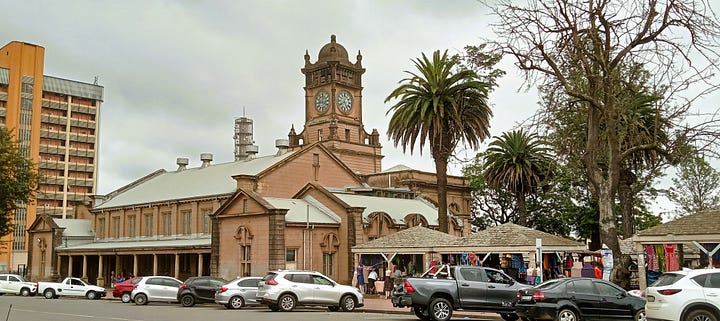
Today’s Mthatha shows little of its previous luster and it takes a taxi driver to point out the former parliament amid a cluster of nondescript office blocks. But a visit downtown to the exceptional Nelson Mandela Museum makes my stay-over well worthwhile. ‘Madiba,’ who grew up just 25-km to the south heads up a long list of leaders of the freedom movement who came from the Transkei — including Walter Sisulu, Oliver Tombo, Winnie Mandela, Thabo Mbeke and Steve Biko. Their names now inscribed upon university halls, government buildings, hospitals and airports throughout this land, it’s hard to overstate the roles of these towering figures who gave their hearts, minds, freedom and lives (in some cases literally) to the cause of overturning the trajectory of history. What is it about Transkei — the rugged hills, climate, living conditions, social structures, education, heritage, or something else? No one can say, but this is certainly an enduring distinction for this remote and breathtaking part of South Africa.

